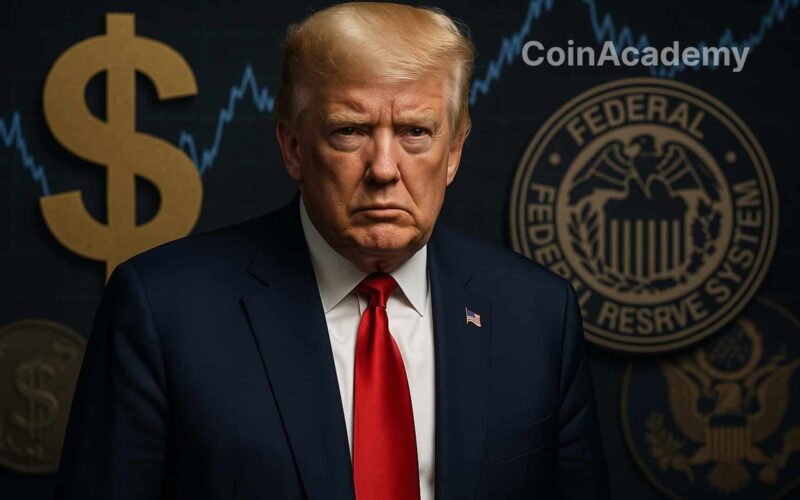Just eight months into his return to the White House, Donald Trump has set his sights on one of the last bastions of independence in the United States: the production of economic statistics. Within days, he ousted the head of the Bureau of Labor Statistics (BLS) – the American equivalent of INSEE – and is preparing to appoint a new Fed governor. This sends a clear signal: Trump wants to regain control over the indicators that move the markets.
We will announce the name of a new statistician in the next three or four days. We had no confidence. In fact, the numbers she announced were ridiculous. – Trump
Wall Street Trembles at the Dismissal
Last Friday, a report on employment deemed ‘catastrophic’ by the president triggered his anger. Result: Erika McEntarfer, director of the BLS, was fired. Trump accuses her of manipulating the numbers without providing any evidence.
An unprecedented and consequential move. The BLS, responsible for data on employment, inflation, and wages, informs crucial political, financial, and monetary decisions. By targeting it, Trump risks undermining trust in the entire American economic ecosystem.
Total Control: Next Stop, the Fed
Simultaneously, Adriana Kugler, a Fed governor, announces her resignation. Trump seizes the opportunity: he aims to appoint his own candidate in the coming days. Officially, Kugler left her post because she shared Trump’s views on interest rates and ‘Powell’s inaction,’ but clashed with the rest of the board.
The goal is clear: prepare for a shift within the Fed. For months, Trump has argued that rates are too high. He dreams of replacing Jerome Powell, whose term ends in May 2026, with a loyal ally. If Powell decides to stay on the board until 2028, Trump might try to sideline him by altering the internal committee balance.
Hassett, Warsh, Bessent: Loyalists on the Horizon
Three names are already circulating: Kevin Hassett, former economic advisor to Trump; Kevin Warsh, a conservative figure close to Wall Street; and Scott Bessent, current Secretary of the Treasury. All share the same vision: less independence for the Fed, more alignment with presidential policy.
This potential shift worries even moderate Republicans. Because the Fed, a pillar of global monetary stability, is supposed to be shielded from political pressures. If it becomes an extension of the executive branch, the signal sent to the markets could be devastating.
The Markets Face a New Era of Defiance
Since January 2025, investors have been trying to get used to Trump’s return. But this assault on economic institutions changes the game. If numbers become political, how can one still anticipate inflation? Rates? The dollar? The risk of a loss of credibility in official statistics is real, and global. William Beach, former BLS chief under Trump, sounds the alarm:
This decision is extremely damaging. It weakens the entire American statistical system.
A Presidency Marked by Control
After disrupting the judiciary, federal agencies, and the media in his first term, Trump now targets economic data. In 2025, he no longer wants just to govern: he wants to script the economic reality himself.




